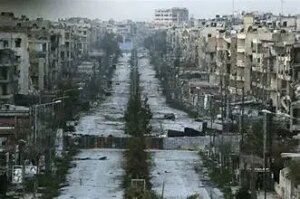The Road to Recovery: Syria’s Post-Conflict Economic Landscape

In a remarkable turn of events, Saudi Arabia and Qatar have taken a significant step forward for Syria by settling the country’s outstanding debt of $15.5 million with the World Bank’s International Development Association (IDA). This crucial act paves the way for the World Bank to reengage with Syria and address the pressing development needs of its beleaguered population. As the World Bank indicated, this reengagement will primarily focus on improving access to electricity—one of the most basic yet critical infrastructure needs.
New Opportunities Amidst Dire Conditions
Despite the new financial avenues opened by this debt clearance, it’s imperative to understand that Syria remains in a precarious state. The aftermath of a brutal 14-year conflict has left the nation grappling with insufficient infrastructure. Even with the promise of new loans, the reality on the ground is stark: millions remain without consistent electricity and potable water.
Currently, electricity production hovers at a dismal 1,500 MW—enough to provide a few hours of electricity daily for some. Unfortunately, an estimated 2.5 to 3 million Syrians are completely off the grid. The situation is compounded by rampant corruption within the regime, which favors certain regions over others.
Water and Sanitation Woes
The struggle for basic amenities doesn’t end with electricity. Roughly half of Syria’s water and sanitation systems are out of commission. The United Nations ranks Syria as the most drought-prone country in the Mediterranean, noting that access to basic drinking water has plummeted from 98% in 2011 to around 50% today. The Euphrates River, once the lifeblood of the nation’s water supply, has seen its flow decline dramatically due to drought conditions and restrictions by neighboring Turkey.
Many dependent on trucked water face severe shortages, with estimates suggesting some areas only receive water once every two to seven days. This scarcity has led to widespread health crises, including cholera outbreaks, complicating what is already a dire medical situation.
Health Care Crisis
The healthcare system in Syria is on the brink of collapse. Over 65% of the population—around 16 million people—cannot access essential health services. Most skilled healthcare workers have fled, leaving behind a system that is severely understaffed. Current estimates show that only 37% of primary health care centers are functional, while just 57% of hospitals operate at minimal capacity. Humanitarian aid has become the lifeline for most Syrians, highlighting the urgent need for systemic upgrades.
Economic Desperation
Syria’s economic outlook is bleak. Over half the population is food insecure, with many struggling to meet daily needs. Additionally, around 90% of Syrians live below the poverty line—a staggering statistic considering that the GDP has plummeted by two-thirds since the beginning of the conflict.
The Syrian pound has taken a massive hit, losing two-thirds of its value just this year. As of now, the exchange rate hovers around 11,000 to 13,000 SYP per USD, a far cry from the 47 SYP to the dollar before the war began. For many, the only viable currency is the Turkish lira, which reflects the severity of the economic collapse.
The Glimmer of Hope
While investments are flowing into Syria following the lifting of sanctions, such as the recent $800 million agreement from Dubai to rebuild the port of Tartus, the road to recovery will not be easy. The need for investments from Gulf nations like Qatar and Saudi Arabia cannot be overstated, but real change will take time and concerted effort.
At Extreme Investor Network, we recognize the potential for growth in such challenging conditions. As we keep our fingers on the pulse of recovery efforts, we invite our readers to stay informed about the complexities and opportunities emerging from this war-torn nation. Opportunities abound, but a clear-eyed perspective on the underlying issues is vital for understanding the true state of Syria’s economic landscape.
As investors, understanding these dynamics not only helps identify potential strategies for engagement but also ensures that any investment is aimed at alleviating suffering and fostering long-term stability. Together, we can navigate the complexities of redefining Syria’s future while championing the needs of its resilient people.
Stay connected with Extreme Investor Network for the latest insights and analyses that matter. Your journey toward informed investment begins here.

